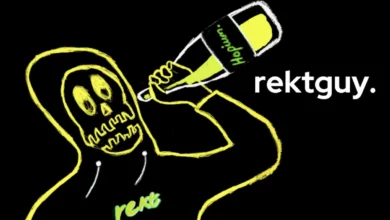NFT Artists Take Stand: Artists Sue SEC Over NFT Regulation
The non-fungible tokens (NFTs) house is witnessing a pivotal second as a bunch of digital artists has filed a lawsuit towards the U.S. Securities and Exchange Commission (SEC). The lawsuit challenges the SEC’s determination to categorise NFTs as securities, arguing that this stance imposes undue restrictions on creative freedom and creates pointless obstacles for digital artists. This authorized battle might form the way forward for NFT regulation and the broader artwork market, elevating essential questions on creativity, expression, and the continuing debate on tips on how to categorize digital artwork belongings.
The Lawsuit and Its Implications
Table of Contents [hide]
The crux of the lawsuit lies within the SEC’s classification of NFTs as securities, a transfer that the plaintiffs argue stifles creative expression. By making use of the Howey Test—a authorized commonplace used to find out whether or not a transaction qualifies as an funding contract—the SEC has successfully positioned NFTs below the identical regulatory umbrella as shares and bonds. This broad interpretation, the artists declare, fails to acknowledge the distinctive nature of digital artwork belongings and its position as a medium of human creativity.
The plaintiffs contend that NFT artwork needs to be protected by the First Modification, which ensures freedom of expression. They search declaratory and injunctive aid to stop the SEC from pursuing enforcement actions towards NFT artists with no clear and honest regulatory framework. This lawsuit not solely addresses the instant issues of digital artists but additionally units the stage for a broader debate on the way forward for NFT regulation within the artwork market.
SEC’s Regulatory Method, Securities Legal guidelines, and Precedents
Below the management of Gary Gensler, the SEC has taken a hardline stance on the regulation of digital belongings, together with NFTs. This strategy has sparked controversy, significantly amongst digital artists who argue that it hampers innovation and creativity. The applying of the Howey Take a look at to NFTs has been a focus of criticism, with many asserting that it’s overly broad and restrictive.
The SEC’s earlier enforcement actions towards NFT initiatives, akin to these involving Affect Concept and the Stoner Cat Internet Collection, have additional fueled issues concerning the company’s authority within the artwork world. These circumstances spotlight the paradox surrounding the SEC’s regulatory attain and underscore the necessity for clearer tips.

The Rise of Digital Artwork Property and NFTs
NFTs have revolutionized the artwork world, offering artists with new avenues for expression and monetization. Digital artwork offered as NFTs has fetched staggering costs at auctions, signaling a shift in how artwork is created, distributed, and valued. This rise of digital artwork has led to revolutionary enterprise fashions and income streams for artists, reshaping the standard artwork market. AI instruments and generative AI programs has additional elevated the chances for digital artwork. Artists are actually in a position to create intricate and distinctive items that push the boundaries of creativity.
The lawsuit towards the SEC goals to carry much-needed readability to the regulatory panorama for NFTs and digital artwork. The plaintiffs argue that artwork will not be merely an funding however a type of expression that deserves safety below the First Modification. They search to ascertain a authorized framework that helps creative innovation whereas offering clear guidelines for the burgeoning NFT market.
This case has attracted vital consideration from the crypto neighborhood and past. Critics of the SEC’s strategy argue that its stringent rules stifle innovation and hinder the expansion of the digital artwork market. The lawsuit has additionally drawn the curiosity of politicians, together with former President Donald Trump, who has publicly criticized the SEC’s regulatory ways.
Conclusion
The result of this lawsuit can have profound implications for the way forward for NFT regulation and the artwork market. A positive ruling for the plaintiffs might pave the way in which for a extra balanced and artist-friendly regulatory framework, whereas an unfavorable determination would possibly reinforce the SEC’s broad interpretation of securities legal guidelines. Because the authorized battle unfolds, the artwork world and the crypto neighborhood will likely be watching carefully, looking forward to a decision that fosters creativity and respects the distinctive nature of digital artwork.
Editor’s word: This text was written with the help of AI. Edited and fact-checked by Owen Skelton.





